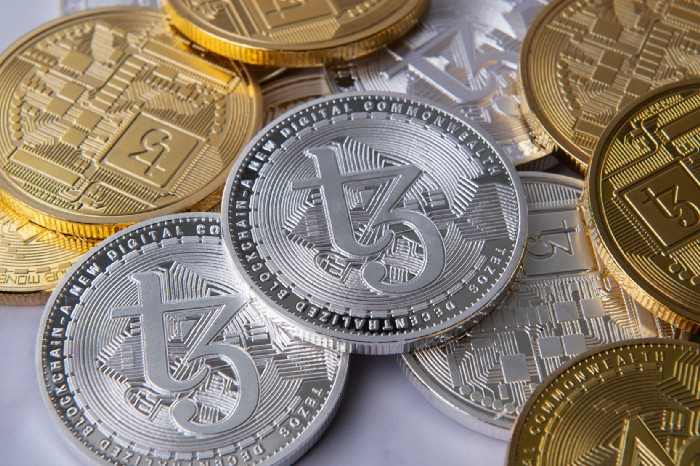
One of the more ironic parts of the crypto space over the past few years has been stablecoins. Crypto is a bet on dollar (and other fiat currency) devaluation, yet stablecoins choose to peg and therefore derive their value from the dollar. What?
It’s pretty silly stuff. Stablecoins were supposedly dreamed up to give crypto investors a less volatile option for their portfolios. But there already exists one — the U.S. dollar or gold or TIPS (inflation protected securities). Or if you’re worried about the U.S. and its debt shenanigans, get some Swiss Francs.

Instead, because slapping the blockchain (and defi) label on anything seemed to make it super trendy and cool, stablecoins took off. Stablecoins claim to be backed by the dollar — i.e. they hold dollars in reserve (similar to how a gold standard currency works). This means that in theory one stablecoin could always be exchanged for one U.S. dollar no matter what was going on, providing a floor price and target value for the stablecoin.
And like all parts of the crypto and blockchain space, the stablecoin space has its serious players and its jokers. Some like Tether seem to actually be backed by real dollars (though many claim that the amount of Tether outstanding is significantly more than the amount of dollars and other assets held in reserve). Then we have the jokes, UST (TerraUSD) and Luna, which are part of the Terra blockchain.
Agorithmic stablecoins: a true Ponzi scheme
Before we get into the details of UST, let me first explain what an algorithmic stablecoin is. A true stablecoin is backed (at least partially) by actual dollars or bonds or whatever (i.e. things with some real value). Algorithmic stablecoins like UST are backed by nothing besides hopes and dreams (and lies).
UST’s algorithm maintains UST’s peg to the dollar (i.e. 1UST = $1) by regulating the supply of UST. So if demand for UST goes up (causing its price to increase relative to the dollar), more UST will be created increasing its supply (and more supply makes the price go down restoring the peg). Conversely, if demand for UST goes down, the reverse happens — the supply of UST gets decreased, which should cause its price to go up restoring the peg.
But if you could just randomly increase and decrease the supply of a currency, then it starts sounding a lot like fiat currencies (government issued paper currencies like the dollar that aren’t backed by anything). So you need some sort of ballast on the other side. That’s what UST’s sister currency Luna is for. Let’s use a simpler example first. Let’s say UST is pegged this way:
1 UST = $1.00 = 1 bottle of Coca Cola
So there’s an inherent relationship between UST and Coke (the asset used to balance UST) baked into the blockchain, where one can be converted into the other. Now say UST goes up by 25% relative to the dollar, we get:
1 UST = $1.25
1 bottle of Coca Cola = $1.00
1 UST = 1 bottle of Coca Cola
There’s an arbitrage in the three equations above. You could make some easy money by borrowing $1 to buy a bottle of Coke, exchanging that bottle for one UST on the Terra blockchain, and then selling that UST for $1.25 on the open market. Finally you repay the $1 that you borrowed, leaving you with a $0.25 profit. People turning their Cokes into UST en masse to take advantage of the arbitrage increases the supply of UST (decreasing its price), allowing the peg to be reestablished.
What about when UST goes down by 25%?
1 UST = $0.80
1 bottle of Coca Cola = $1.00
1 UST = 1 bottle of Coca Cola
Now people would borrow $0.80, buy a UST, convert it to a bottle of Coke on the Terra blockchain, and sell that bottle for $1 on the open market, netting a $0.20 profit. The mass conversion of UST to Coca Cola decreases the supply of UST (increasing its price), reestablishing its $1 peg.
Funny money
Now why did I use Coke in my example instead of Luna? I did that because such a system might actually work if the thing on the other side was something of value that people gained utility from. The critical relationship is the middle one in the three equations (1 bottle of Coke = $1). Let’s look at what happens if that relationship breaks down. Revisiting our UST 25% down scenario, let’s modify the middle equation:
1 UST = $0.80
1 bottle of Coca Cola = $0.80
1 UST = 1 bottle of Coca Cola
Now both UST and Coke have gone down in price. The earlier arbitrage no longer exists (if I borrow $0.80 to buy a UST and exchange it for a Coke, I end up with the same $0.80) so there’s no longer an incentive to convert UST into Coca Cola. In this case, there’s no forcing function to restore the peg.
This means that for an algorithmic coin to work, the ballast on the other side must be somewhat stable and have some inherent value. In UST’s case, it was pegged to another cryptocurrency from the Terra blockchain, Luna (so in the equations above, every time you see “bottle of Coca Cola”, change it to Luna). In other words, it was pegged to an equally valueless and volatile asset.
The whole thing was smoke and mirrors. It’s a bit like a frothy loan market. People are able to borrow cheaply to buy assets, which pushes up asset prices. The increase in asset prices means that there’s now more equity that can be used as collateral to fund more loans. These incremental new loans push asset prices up even more and so on. It’s a positive feedback loop until it isn’t. And the reverse is ugly — lower asset prices lead to margin calls, which lead to forced selling and even lower asset prices, which lead to even more margin calls.
UST derived its value from the Luna connection and Luna derived its value from the UST connection. As long as UST remained dollar pegged and Luna was going up or stable, things would be fine. But as soon as one experienced a large decline, it would necessarily erode confidence in the other, creating a negative feedback loop.
And that’s exactly what happened. Fed interest rate increases kicked off selloffs in virtually all risky assets, which roiled crypto markets, triggering some very large sales of both UST and Luna. This caused UST to break its peg to the dollar (a.k.a. it went down… a lot) at the same time that Luna experienced its own price crash. The algorithm, attempting to find a new equilibrium, flooded the market with Luna (the conversion of UST into Luna was supposed to reduce the supply of UST and restore the peg). But owners on both the UST and Luna side, seeing that the gig was up, desperately tried to offload their holdings.
The more that UST went down, the more Luna tokens had to be printed (which caused Luna to crash further and Luna holders to panic even more). The more Luna crashed, the less faith UST holders had in the peg ever being restored, causing even more UST sales, which caused even more Luna to be printed.
It’s a classic case of hyperinflation, which is ironic given that crypto is supposed to be a hedge against hyperinflation. Where a week or so ago there was only 340,000 Luna tokens in existence. As of this past Thursday (May 13), there was 6.5 trillion… ouch.
From:https://medium.com/alpha-beta-blog/the-terrausd-stablecoin-lunacy-explained-cd290e326b47
 Web3News
Web3News




